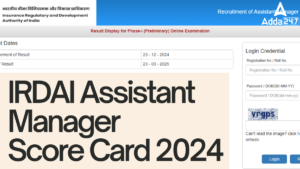Table of Contents
Quantitative Aptitude for Bank Exams 2019
Quantitative Aptitude is hard in most cases especially in exams like Banks and Insurance. Many Banks exam has a two-tier examination pattern i.e., Prelims and Mains. Most of them have changed their exam patterns and set a sectional timing of 20 minutes on each section. Quantitative aptitude is important for every Bank Exams because proper strategy and enough practice can help you score full marks in this section. The level of changes may not be assured in the language section and you may be stuck while solving reasoning questions but quants is a scoring subject and assure full marks if the calculation is correct.
Successive Concept and Multiplying Factor-
We have seen successive concepts in our previous series-
The successive concept is applied when the value is changing simultaneously
Example1– Let say a value is increased by 10% and then increase by 20% then find the percentage change-
We have seen the formula for successive change-
X+Y+[(X*Y)/100]
Note– Here Sign is according to either value is increased or decreased by respective percentage.
Now comes to the question here X=10% and Y=20% both is increased so sign between them is +
10+20+[(10*20)]/100=32%
Here you will notice in percentage change we did not require exact values.
Example2-If a value is increased by 60% and then decreases by 20% find the percentage change.
Here increase is taken by + sign and decrease is taken as (-) sign
So, +60-20+[(+60*-20)]/100= +60-20-40/100=40-0.4=39.6%
Example3- If a value is increased by 20% and then increases by 25% and then increases by 40% and at last it decreases by 10% to find the percentage change.
i.e. +20%, +25%, +40%, -10%
Here there is 4 percentage change
In successive we solve them by taking 2 at a time
Also, Note- In the successive order of change does not affect the final value.
You choose any change in pair-
a)+20+25+20*25/100=50%
b)40-10-[(40*10)/100]=30-4=26%
c)Take resultant now the sign of resultant is taken as positive and negative according to the change
50+26+50*26/100=89%
This method’s drawback is when more than 2 changes are there then the method is long
Also when the percentage change is irregular.
Example- If a value is increased by 20% and then increase by 14 2/7 percent and then decrease by 57 1/7.
Here the best approach is to solve it by Multiplication Factor-
Multiplication Factor is the ratio of Final and Initial Value
Now come to question-
Final Value= Initial value * 6/5*8/7*3/7=144/245
It means if the initial value is 245 then the final value is 144
Now you easily find a % change.
Example- If an initial population of village A is 490cr and there is an increase in population per year is 20%, 2nd year 14 2/7 and 3rd-year decrease of 57 1/7. Find the percentage population change after 3 years.
Solution– we have derived multiplication factor in the previous question
Final value = Initial value* 144/245
245 equivalents to 490
245=490
1=2
The final population is 288 cr.
Now Some Examples –
Example1. A person spends 25% of his income on house rent, 20% of his income in food and 10% of his income in traveling finally he saves Rs. 8100. Find the total income.
Solution-Let Income is 100%
Expenditure=55%
Saving= Income- Expenditure= 100%-55%=45%
But the saving is =8100
45% of Income=8100
Income =8100/45*100=1800.
Example2-A person spends 25% of his income on house rent, 20% of the remaining part on food and 10% of the remaining part of traveling and finally save Rs 8100. Then his income is
Solution-
Method 1-Let Income is 100
Expenditure on house rent= 25% of 100=25
Remaining income =75
Expenditure on food= 75 of 20%=15
Remaining income=60
Expenditure on travelling= 10% of 60=6
Remaining income or saving=54
54=8100
Income=8100*100/54=15000
Method 2-Multiplication factor method
He spends 25% of his income on house rent i.e. 1/4 = if income is 4 then the expenditure is 1 and saving is 3
Same as food= 20%=1/5 remaining=80% or 4/5
10% travelling= 1/10 remaining= 90% or 9/10
Final(saving)= Initial(Income)*3/4*4/5*9/10
Final/Initial=27/50
27 part=8100
1=300
50 part=15000
Example3- A person spends 12.5% of his income on food. 20% of the remaining part of traveling and 16.66% of the remaining portion on entertainment. He deposited the remaining amount in saving the account. If his total expenditure is Rs 3500. Then find his income.
Solution– 12.5% of income on food=1/8 i.e. income=8 then expenditure is 1
Saving =7
20% on travelling= 1/5 i.e. remaining=4/5
16.66% on entertainment= 1/6 remaining=5/6
Final(saving)=Income*7/8*4/5*5/6=7/12
Here Income=12 units, Saving=7 units
Expenditure= 5 unitsequivalents to 3500
Income=70000
Example4– In an office 37.5% of employees are female, 40% male employees are graduate, 11.11% of the non-graduate male employee is computer friendly. If 270 male employee is neither graduate noncomputer friendly. Then the total number of employees in the office?
Solution– 37.5% are female=37.5%=3*12.5%=3/8
Total employee=8, then female=3, Male=5
Graduate=40% male= 2/5
Non graduate male=3/5
11.11% non graduate are computer friendly= 1/9 , neither graduate male nor computer friendly= 8/9
Final=Initial *5/8*3/5*8/9
Initial*5/8*3/5*8/9=270
Total employee=810
Questions for practice-
1. A person spends his total income on food in ratio 7:3. 1/3 part of the remaining part spends on traveling and 25% on entertainment. 12.5% of the remaining money he denotes finally saves 2000. Find his income.
2. A person spends x% of his income on petrol, 16.66% of the remaining part he spends on entertainment, Finally saves 3/4th of his total income. Find x?
3. The total population of a village is 5000. The number of males and females increases by 10% and 15% respectively and consequently, the population of the village becomes 5600. what was the number of males in the village?
4.If the length of the rectangle is increased by 10% and breadth is increased by 20% find the increase in the perimeter of a rectangle?
You may also like to read-





 The Hindu Review October 2022: Download ...
The Hindu Review October 2022: Download ...
 IRDAI Assistant Manager Score Card 2024 ...
IRDAI Assistant Manager Score Card 2024 ...
 IRDAI Assistant Manager Prelims Cut Off ...
IRDAI Assistant Manager Prelims Cut Off ...




